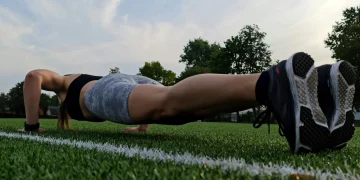Endurance is the body’s ability to perform any exercise for a long time. This is important for the development of physical fitness needed for running longer, improving sports results, and performing everyday tasks.
Both beginners and experienced athletes can improve their running endurance. For example, a beginner runner can work on distance, starting from 2 to 4 miles and building to 6. For experienced runners, the priority is to improve their pace, with the help of which they will overcome significant distances.
How to Increase Endurance: Distance Running Tips
Endurance level determines how much work must be done and, subsequently, the average intensity of this work. Whether you want to run longer distances, complete races faster, or feel more comfortable, it’s all limited by your current level of endurance.
At the physiological level, endurance training primarily develops the central and peripheral aerobic components.
Central components (adaptation of organs and body systems):
- The volume of the heart – the heart muscle becomes stronger and more voluminous, the pulse zones decrease, and the pressure normalizes.
- Hemoglobin mass and blood volume – with systematic running, a positive increase in both indicators is observed.
1. General Endurance
General endurance is the foundation of physical performance. It is essential in optimizing metabolism and is an important component of physical health. General endurance is the basis for developing running endurance, an inevitable step for any athlete.
If you get out of breath or tired quickly, you probably don’t have enough general endurance. It can be developed with the help of walking. Warm-up for 20 minutes, gradually increasing your heart rate and breathing rate. Then you can have a long (relative to your current state) slow run.
2. Golden Rule
If you want to run long distances, follow the 10% rule: never increase your weekly mileage by more than 10% and never increase your maximum mileage by more than 10%. The vast majority of running injuries are the result of too much distance. Your body is capable of amazing adaptations, but only if they are gradual. So give your body time to adjust and recover.
3. Try the “Yasso 800” Method
According to Bart Yasso, the former chief executive of Runner’s World, this method will suit athletes who have participated in a marathon at least once and know their results.
Knowing the time you ran the marathon in hours and minutes, convert it to minutes and seconds. For example, if your marathon goal is 3 hours 30 minutes, your converted time is 3 minutes 30 seconds.
Follow the training sequence:
- Warm-up: jog for 5-10 minutes and do several warm-up exercises.
- 800m Interval: Run 800m in the converted time (3:30 in the example).
- Recovery: Jog or walk for the same time (3:30).
- Repetitions: Start with three to four repetitions per workout during the first week. Later, increase the number of repetitions.
- Cool-down: Finish the workout with a 5-minute light jog or walk. Don’t forget to stretch.
Follow the Yasso 800 plan once a week.
4. Alternate Training for Endurance Running
Physiologist Bill Pierce, the co-founder of the Furman Institute of Running and Scientific Training (FIRST), recommends trying three days of running per week.
He runs at a specific target pace and distance: one run is long-distance running, the second is tempo work, and the third is speed work. On the off days, Pierce lifts weights or plays tennis.
For example, do a speed workout every Tuesday, a tempo workout every Thursday, and a long run every Sunday.
5. Run Long with Final Acceleration
This principle was popularized by former world marathon record holder Khalid Khannouchi. It is based on long hard runs during which the runner spends 2-3 hours on his feet.
He advises speeding up at the end of long runs to improve your marathon times. That is, pick up the pace in the last 25% of the distance.
For example, if you run 16 miles in total, run the last 4 miles faster. In the end, you will feel tired, but it is important to accustom your body to such loads.






